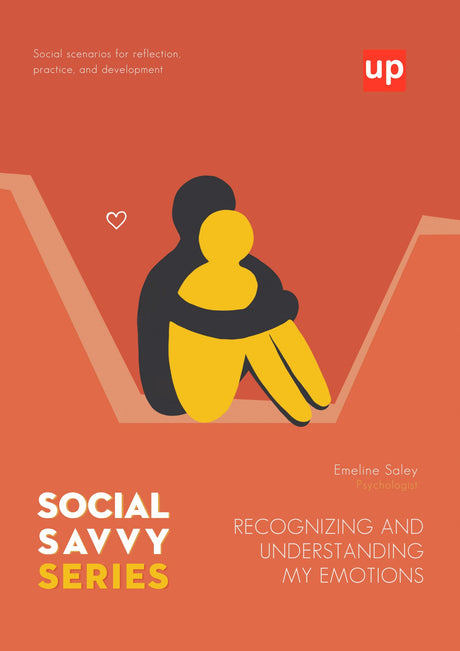The nuanced relationship between empathy and autism is often obscured by misconceptions and stereotypes. As with any complex psychological concept, it is important to approach this topic with an open mind and compassionate heart. This post aims to address the widespread stereotype that people with autism cannot feel or express empathy. We will delve into our understanding of autism, examine the roots of this stereotype, explore the scientific evidence that challenges this misconception, and discuss strategies for cultivating empathy in children with autism. Ultimately, we hope to promote empathy towards people with autism in society.
Understanding autism
 Autism spectrum disorder (ASD) is a neurological and developmental disorder that begins early in childhood and lasts throughout a person's life. It affects the way a person acts, interacts, communicates and learns. The term 'spectrum' is key here, highlighting the wide range of symptoms and severity that people with autism can experience. Some individuals may need significant support in their daily lives, while others may need less.
Autism spectrum disorder (ASD) is a neurological and developmental disorder that begins early in childhood and lasts throughout a person's life. It affects the way a person acts, interacts, communicates and learns. The term 'spectrum' is key here, highlighting the wide range of symptoms and severity that people with autism can experience. Some individuals may need significant support in their daily lives, while others may need less.
A common misconception about autism is that all people on the spectrum share the same characteristics or abilities. In reality, the manifestations of autism are as diverse as the individuals themselves. This diversity is nicely encapsulated in the saying, "If you've met a person with autism, you've met a person with autism."
Stereotypes about autism and empathy

One of the most common myths surrounding autism is that people on the spectrum are unable to feel or express empathy. This stereotype is rooted in early research on autism, which characterized it as a disorder characterized by social and emotional deficits.
Over time, this became a blanket statement that people with autism are emotionally deficient or "lack empathy," which can be both harmful and misleading. It contributes to the stigmatisation and alienation of people with autism, leading to fewer opportunities for social interaction, employment and independent living.
Empathy in autism: The science behind it
Recent scientific research shows a different, more nuanced picture of empathy in people with autism. The key lies in understanding that empathy has two main components: cognitive empathy (the ability to understand another person's perspective) and emotional empathy (the ability to share another person's feelings).
Research shows that while some people with autism may have difficulties with cognitive empathy, they often demonstrate emotional empathy. That is, they can share the feelings of others, even if they have difficulty understanding the reasons behind those feelings. This could explain why empathy in autism may look different but is not absent.
For example, a child with autism may feel sad when he or she sees a classmate crying, but may not understand why the classmate is crying. In such cases, it is not a lack of empathy, but a different way of experiencing and expressing it.
Case studies
To bring this understanding to life, let's look at some real-life cases. Twelve-year-old Sam, who has autism, often became overwhelmed and anxious during loud gatherings. However, when his younger sister, who is not on the spectrum, started crying at a rowdy party, Sam was the first to comfort her. He put his arm around her and led her to a quiet room, intuitively understanding her need for calm.
In another case, Jessica, a young adult with autism, works at a local animal shelter. Her colleagues have noticed her extraordinary empathy towards animals in distress, demonstrating her deep capacity for emotional connection.
Empathy training: Strategies for supporting people with autism
Understanding the unique way in which people with autism experience empathy also informs how we can better support them. Parents, carers and teachers play a key role in fostering empathy in children with autism.
Modeling empathetic behavior, teaching emotion recognition through games and activities, and encouraging perspective-taking exercises can be particularly beneficial. In addition, giving them opportunities to express empathy in their own ways can also be rewarding. Remember that, like neurotypical children, children with autism are unique individuals. What works for one may not work for another, and patience and understanding are key during this process.
 The role of society: Promoting empathy towards people with autism
The role of society: Promoting empathy towards people with autism
While cultivating empathy in people with autism is important, it is equally important to promote empathy for people with autism within society. Misconceptions about autism can lead to exclusion, prejudice and even discrimination.
Public education about autism and its complexities is a good starting point. Empathy can be fostered by presenting accurate information about autism, sharing stories of people with autism and promoting their inclusion in various areas of life, from education and employment to media representation.
Supporting autism-friendly environments, advocating for policies that respect the rights and needs of people with autism and challenging derogatory language and harmful stereotypes can also make important steps in creating a more empathetic and inclusive society.
Further understanding of empathy in autism
It is important to remember that everyone's experience of empathy, whether on the autism spectrum or not, can vary considerably.
Cognitive empathy, or theory of mind, is the ability to understand another person's mental state and their possible thoughts and reactions. Some people with autism may struggle with this form of empathy, but that does not mean they are indifferent to the feelings of others. They may have difficulty understanding the perspectives of others, but they can often care very deeply when they realize that someone else is distressed.
Emotional empathy refers to the ability to share the feelings of others. Many people with autism exhibit strong emotional empathy. They can become very distressed when they see someone else suffering. Sometimes, they may even be too overwhelmed to offer help, which can be misinterpreted as a lack of empathy.
It is also vital to note that empathy can be affected by other factors, such as sensory processing problems common in autism. For example, a person with autism may be so overwhelmed by a noisy, chaotic environment that they have difficulty interpreting or responding to the emotional states of others.
Strengthening social empathy towards people with autism
In order to enhance social empathy towards people with autism, it is necessary to increase public awareness and understanding of the situation. Here are some strategies that can be considered:
Public awareness campaigns: These campaigns can educate the general public about autism, its signs and symptoms, and the experiences of those living with it. This can include information about empathy in autism, dispelling the myth that people with autism cannot experience or express empathy.
Inclusive representation in the media: Positive and accurate portrayals of people with autism in the media can help address stereotypes and promote understanding. This includes representation in films, TV shows, books and news.
Supporting autism-friendly environments: This can include supporting sensory-friendly events or venues and supporting companies offering autism-friendly products or services.
Education: School programmes can teach neurotypical children about autism, promoting understanding and empathy from an early age. This can also include training for teachers to help them better support students with autism.
Celebrating neurodiversity: Promoting the concept of neurodiversity can help shift the perspective of autism from a disorder that needs to be treated to a different but equally valid way of experiencing the world. This can encourage acceptance and empathy towards people with autism.
Remember that empathy goes both ways. As we seek to understand and support people with autism in expressing empathy, we must also work to cultivate empathy for them within society. Only then can we create a world that truly understands, accepts and supports all forms of neurodiversity.
Conclusion
Empathy and autism, far from being mutually exclusive, are intertwined in unique and complex ways. By dispelling the myth that people with autism are incapable of empathy, we can challenge harmful stereotypes, promote a better understanding of autism, and build an inclusive society. Just as we strive to cultivate empathy for people with autism, we must also work to promote empathy for them within our communities. Only then can we move beyond stereotypes and misconceptions towards a world of understanding, acceptance and mutual empathy.
Original content from the Upbility writing team. Reproduction of this article, in whole or in part, without credit to the publisher is prohibited.
You can also read:
- Asperger Syndrome: a guide for family and friends
- The Link Between ADHD and Exercise
- Improve Your Child's Self-Esteem With Extracurricular Activities
- ADHD and Lying: The Reasons Why Kids With ADHD Are Prone to Lying
- Back to School: Making it Easier for Students With Learning Disabilities
- ADHD and Substance Abuse in Teenagers A Research
Suggested Books on Special education :














